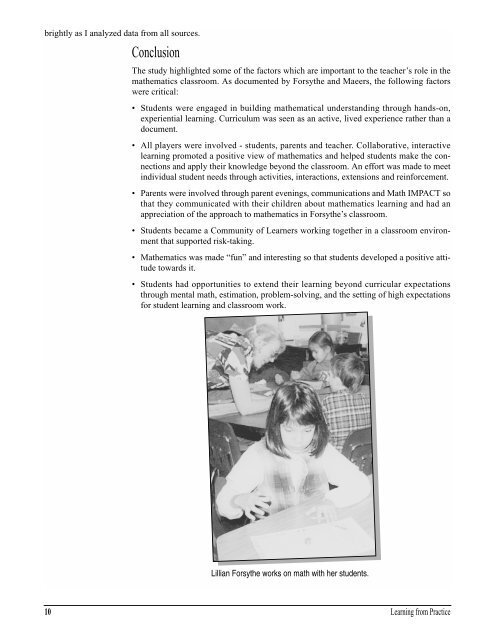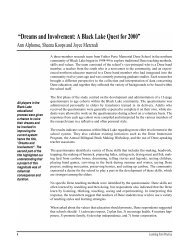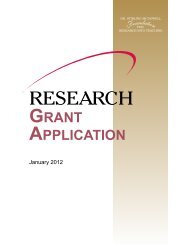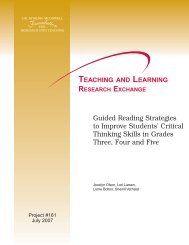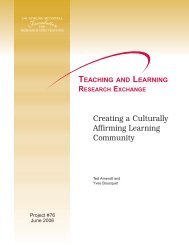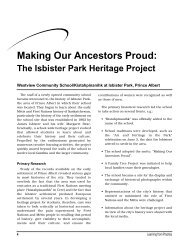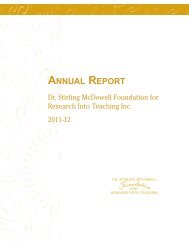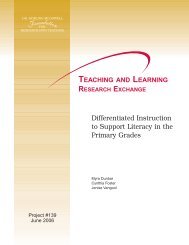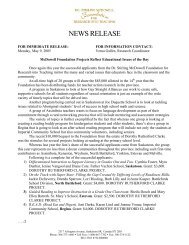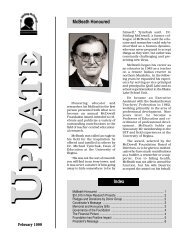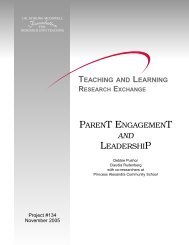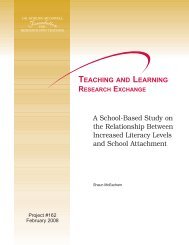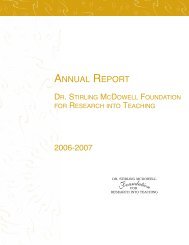Research Bulletin, Vol. 1, No. 2, 1996 - Dr. Stirling McDowell ...
Research Bulletin, Vol. 1, No. 2, 1996 - Dr. Stirling McDowell ...
Research Bulletin, Vol. 1, No. 2, 1996 - Dr. Stirling McDowell ...
Create successful ePaper yourself
Turn your PDF publications into a flip-book with our unique Google optimized e-Paper software.
ightly as I analyzed data from all sources.ConclusionThe study highlighted some of the factors which are important to the teacher’s role in themathematics classroom. As documented by Forsythe and Maeers, the following factorswere critical:• Students were engaged in building mathematical understanding through hands-on,experiential learning. Curriculum was seen as an active, lived experience rather than adocument.• All players were involved - students, parents and teacher. Collaborative, interactivelearning promoted a positive view of mathematics and helped students make the connectionsand apply their knowledge beyond the classroom. An effort was made to meetindividual student needs through activities, interactions, extensions and reinforcement.• Parents were involved through parent evenings, communications and Math IMPACT sothat they communicated with their children about mathematics learning and had anappreciation of the approach to mathematics in Forsythe’s classroom.• Students became a Community of Learners working together in a classroom environmentthat supported risk-taking.• Mathematics was made “fun” and interesting so that students developed a positive attitudetowards it.• Students had opportunities to extend their learning beyond curricular expectationsthrough mental math, estimation, problem-solving, and the setting of high expectationsfor student learning and classroom work.Lillian Forsythe works on math with her students.10Learning from Practice


